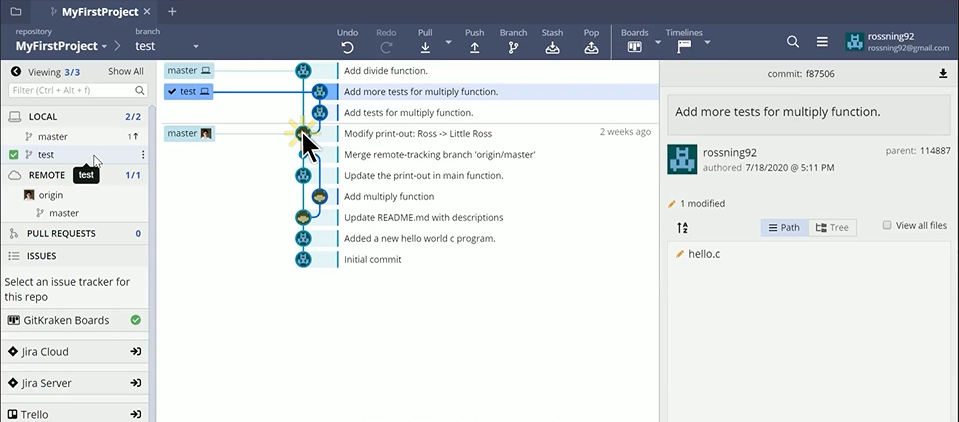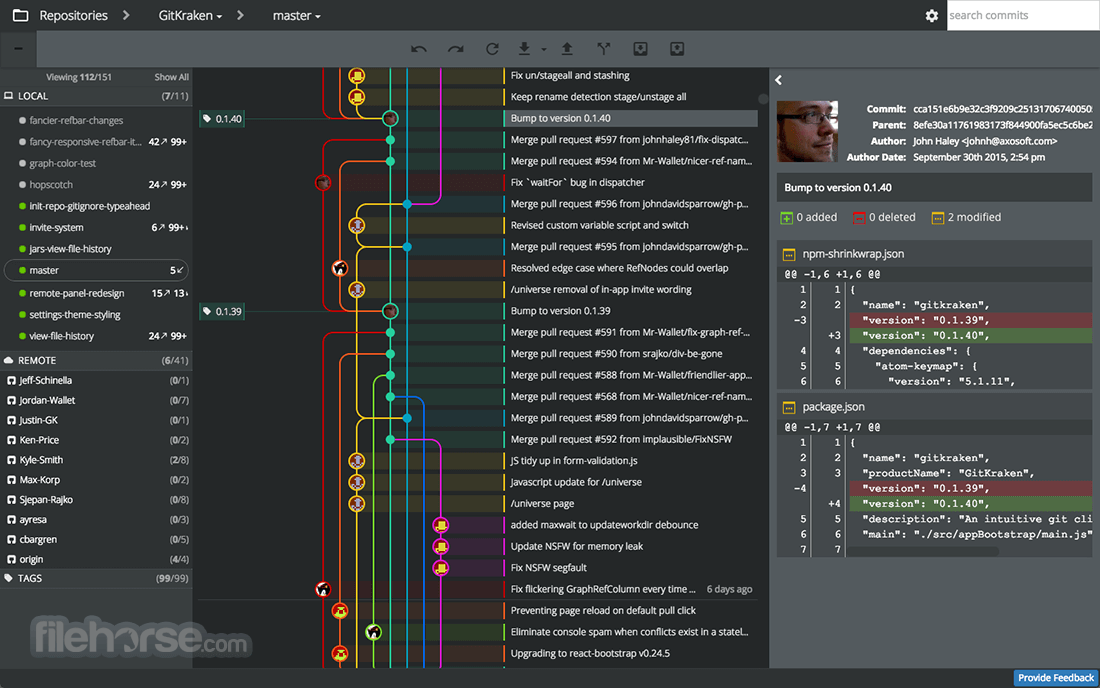
Or you can try copying-and-pasting (but boy, I hope for your sake the email is correct). Next, you’ll need to worry about typing everything correctly. The latter strategy is sure to end in a Google search anyways, because no one can remember Git commands. This could entail an Internet search, or maybe you’ll phone a friend or ask a colleague. First, you need to figure out, or remember, which command to utilize. Setting up your SSH authentication through the command line is a long and tedious process. Adding the key to the host-GitHub, GitLab, Bitbucket, Azure DevOps, Git server-allows the remote to know which connections are authorized to communicate with your repos. Using SSH requires one extra step, which is adding the SSH key to the hosting service. Whereas SSH requires an SSH key that can be generated using the command line.
#Gitkraken how to rebase password#
The HTTPS URL only requires a username and password for authentication. In Git, the most common communication channels are HTTPS and SSH. In order to interact with your remote repos, you need a way for your local machine and the remote machine to communicate.

The concept for the GitKraken Git GUI was born from this very frustration.

But do you ever sit back and think about how much time you’re spending on each of these seemingly smaller tasks? Trust us, it adds up. Between generating new SSH keys, cloning Git repositories, viewing commit diffs, creating pull requests, and on and on. The typical workday for a developer using Git involves a variety of different tasks.


 0 kommentar(er)
0 kommentar(er)
